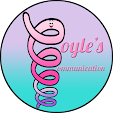Youtube has a LOT of content so I have compiled my favorite channels and links and organized them into categories so you can easily find a video that fits your speech and language therapy goals. I love to Sing!! and sometimes singing words and concepts with the right side of our brain helps us to be able to say those same words with the left side of our brain. Do you have some favorite videos or channels that I don't have below? Please leave a comment and tell me about them!
Youtube Channels:
- Songs for Speech
- Speech and Language Songs
- Jack Hartman
- Have Fun Teaching
- Rockin' English Lessons
- Peachie Speechie (How to say each Sound Videos)
- Patty Shukla
- Maple Leaf Learning
- Grammar Songs by Melissa
- Super Simple Songs
- Learning Time Fun
- How to Retell a Story (not a book, lesson using Goldilocks and the 3 bears)
- Goldilocks and the 3 bears
- Seasons
- Chrysanthemum by Kevin Henkes
- Stellaluna by Janell Cannon (I use this to teach cause and effect)
- The Very Hungry Caterpillar
- Jump Frog Jump
- Run Turkey Run
- The Mitten
- Room on the Broom
- Mooseltoe by Margie Palatini
- The Gingerbread Boy and The Gingerbread Girl (I like to compare/contrast these books)
- Tuesday by David Wiesner and the Animated Video of Tuesday (I use this to teach inference)
- Junkyard Wonders Part 1 and Part 2
- Where is the Green Sheep /sh/
- Tacky the Penguin by Helen Lester
- Compare and Contrast The Fox and The Crow and The Dog and the Shadow (Listening only)
- Adjectives (first grade)
- Adjectives
- Opposites Song
Social Skills:
- Whole Body Listening Larry at School
- Be a Whole Body Listener
- Think it or Say it
- Use Polite Words
- Nice Words Social Story
- Nice Words Social Script
- I use my words and keep my hands to myself.
- Multiple Meaning Words
- Synonyms
- Antonyms
- Homophones
- Homophones
- Analogy Lesson
- Analogy Types
- Analogy Song
- Hyperbole
- Story Map
- Persuasive Writing Lesson 1
- Persuasive Writing Lesson 2
- 5 Types of Informational Text Structure
- Personal Pronouns
- Pronouns He, She, It, They
- Present Progressive He is, She is
- Pronouns Flocabulary Rap
- Pronouns Song
- Possessive Pronouns
- Possessive Adjectives
- Reflexive Pronouns
- Reflexive Pronouns
- I am, You are, He/She is
- Possessive Nouns
- Singular and Plural Nouns
- Verb Rap Song
- Regular Past Tense Verbs
- Regular Past Tense Verbs Chant
- Regular and Irregular Past Tense Verbs Story about Mr. Morton
- Present Perfect Verbs
- Perfect Tense Flipped Lesson
- Perfect Tense
- Past Tense vs. Perfect Tense
- Contrast Conjunctions
- Inference
- Cause and Effect Lesson
- Cause and Effect Practice
- Butterfly or Moth (Compare and Contrast)
- Main Idea Song






































